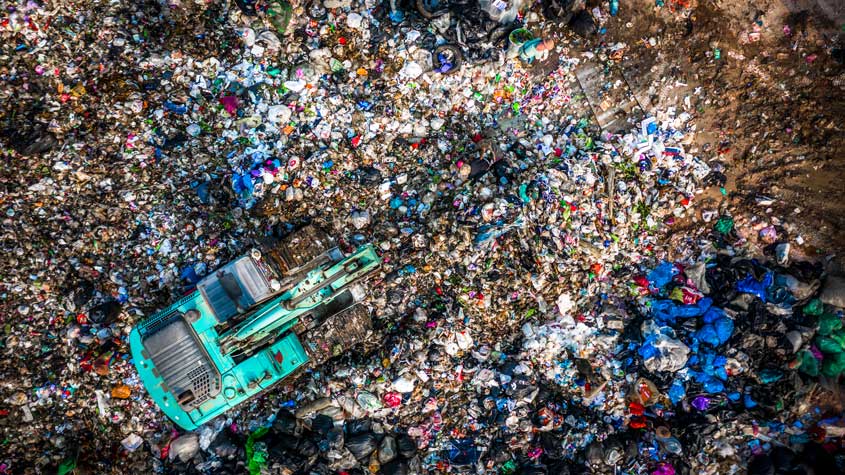Treating Wastewater in the Philippines with Vigormin
Research undertaken by Dr. Merlinda A. Palencia at Adamson University in the Philippines offers a non-toxic way to treat odors generated by wastewater and solid waste.
With funding from the Department of Science and Technology through the Philippine Council for Industry, Energy, and Emerging Technology Research and Development (PCIEERD), Dr. Palencia developed Vigormin, a white powder comprising several organo-minerals, which are abundant in the Philippines.

A low-cost, non-toxic way to neutralize odors
The powder is alkaline, non-toxic, odorless and partially soluble in clean water. It is stable in a dry condition and can be stored at a temperature range of 15°C to 50°C for 18 months. It contains no microorganisms or enzymes.
The application of Vigormin by powder dispersion can significantly improve the characteristics of domestic wastewater and can result in a reduction of total suspended solids (TSS), decreased biochemical oxygen demand (BOD) and chemical oxygen demand (COD). It can also significantly increase dissolved oxygen (DO), which aerobic microorganisms need to break down waste These qualities make Vigormin an effective water remediation/treatment technology.
A solution of Vigormin in water is also effective in neutralizing strong wastewater or septic odor and can also neutralize strong odors from the decomposition of organic waste in landfill or material recovery facilities.
Vigormin is a mixture of naturally occurring organo-minerals, which significantly stimulates growth of the indigenous aerobic microorganisms in wastewater and boosts the rate at which organic pollutants are removed.
Vigormin can also adsorb heavy metals, such as mercury (Hg) and other suspended solids present in wastewater. The application of Vigormin by powder dispersion can greatly improve wastewater quality.
These biogenic, or organo-minerals are composite materials consisting of an organic matrix and nano- and micro-scale amorphous or crystalline minerals. These materials are composed of a variety of transition natural metal minerals that can be produced by different bacteria.
Vigormin is an effective, low-cost, simple and safe way to:
- treat septic/domestic wastewater from hotels, commercial establishments, condominiums;
- neutralize strong acrid and rotten odors present at landfill sites, material recovery facilities, piggeries, fishing ports; and
- treat wastewater with a high organic load, for example, wastewater from food processing industries, public markets, slaughterhouses and restaurants.
Benefits of using Vigormin
After application of Vigormin, the following wastewater indicators are evident within 7 to 21 days:
- a reduction in TSS, BOD and COD
- an in increase in DO
- low-levels of turbidity
- odor neutralization, and
- removal of mercury (Hg), lead (Pb), zinc (Zn) and copper (Cu) through adsorption.
Depending on the wastewater flow rate and the capacity of the treatment facility, further applications are required every 7 to 21 days.
For solid waste, Vigormin neutralizes odors within 30 to 60 minutes of application. Reapplication is required whenever new volumes of solid waste are placed in a holding area of a materials recovery facility or landfill site.
Protecting Vigormin with intellectual property
The formulation and preparation of Vigormin Biogenic Minerals is registered (Reg. No. 2-2016001112) with the Bureau of Patents of the IP Office of the Philippines (IPOPHL) and the names Vigormin, Vigorsol, and Envigor are registered as trademarks.
IP rights help to secure the long-term competitive advantage of a product and can enable research and development institutions to generate a revenue stream, which can sustain other research projects and enable further innovations.
Why IP is important for researchers
Intellectual property (IP) rights help to secure the long-term competitive advantage of a product and can enable research and development institutions to generate a revenue stream, which can sustain other research projects and enable further innovations. IP encourages researchers to continue their work on new product development and to actively participate in efforts to make science relevant to current challenges and to produce locally developed technologies to drive inclusive growth of the national economy.
Vigormin as a business
Vigormin began its commercial operations in March 2020, after the company received its Board of Investment registration as a Pioneer Manufacturer. The company’s semi-automated plant currently employs 7 people and produces around 1,500 kilograms of product per day.
